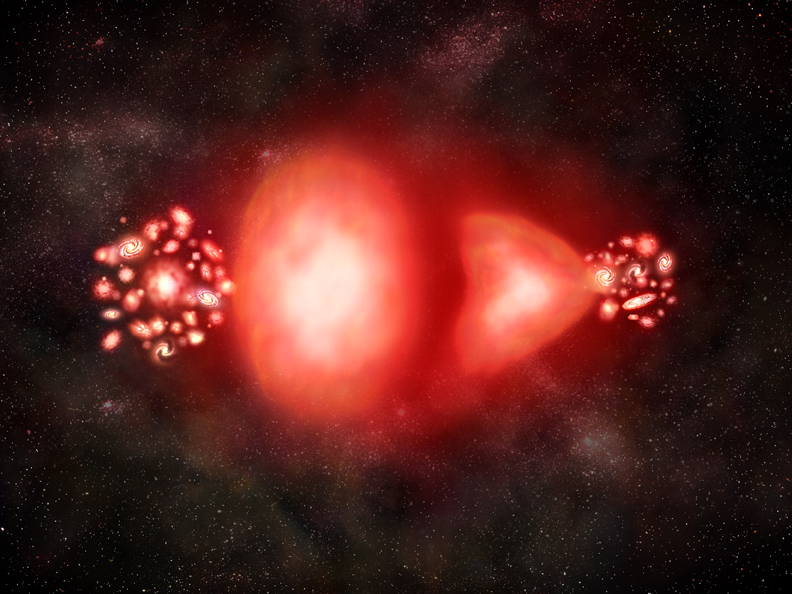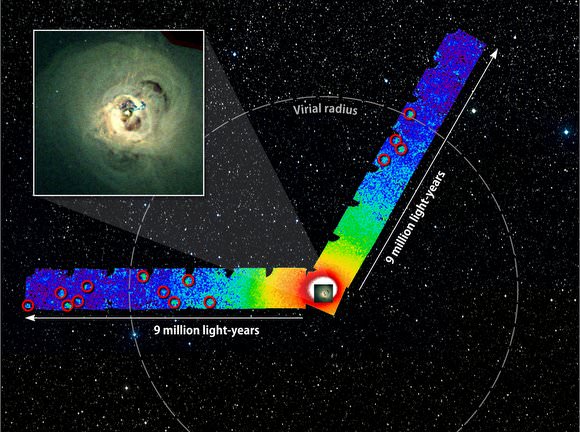Can chocolate cream eggs help explain the mysteries of the Universe? As part of the University of Nottingham’s Sixty Symbols science video series, the Cadbury creme egg has been featured this week, with several eggcellent videos just in time for Easter. This one discusses the cosmological constant, and the possibility of how we might be surrounded by tiny eggs from another dimension. Surprisingly, scientists can explain and demonstrate the some fundamental scientific laws that govern the universe with yummy cream filled chocolate eggs. See more egg-themed discussions at Sixty Symbols.
President Obama to Attend Endeavour’s Last Launch on April 29

[/caption]
President Barack Obama and the entire First Family apparently plan to attend the final launch of Space Shuttle Endeavour, according to government officials and multiple news outlets. Endeavour is slated to blast off on the STS-134 mission next Friday, April 29 from the Kennedy Space Center (KSC) in Florida at 3:47 p.m. EDT.
There has already been intense drama surrounding the STS-134 mission because it is being commanded by Mark Kelly. Kelly is the husband of U.S. Congresswoman Gabrielle Giffords of Arizona who was critically wounded by gunshots to her head at point blank range during an assassination attempt while attending a meet and greet with her constituents on Jan. 8, 2011. Six people – including a nine year old girl and a federal judge – were killed and a dozen more were wounded that awful day.
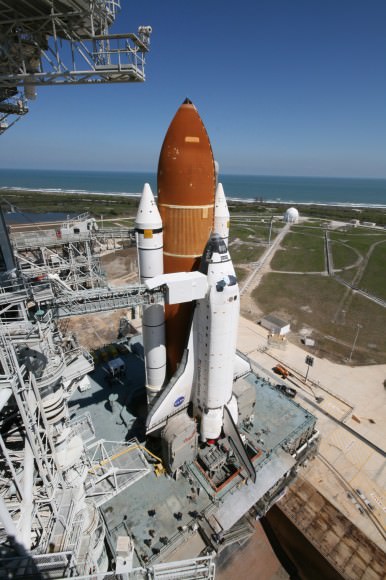
The Presidents appearance at the STS-134 launch will almost certainly lead to skyrocketing interest, but has not yet been officially announced by NASA and the White House. The event is not yet listed on the presidents official schedule.
However, a tweet by the staff of Congresswoman Giffords on her official website states Obama will attend; “We are very happy that Pres. Obama is coming to Mark’s launch! This historic mission will be #Endeavours final flight.”
NASA spokesman Allard Beutel told me today, “I cannot confirm whether the president will be coming to launch next week. If he’s coming, which I can’t confirm, we are a White House agency.”
“We always welcome a visit from the President,” Beutel said.
Security is always tight at KSC during a shuttle launch. A visit by President Obama will certainly lead to even tighter security controls and even more massive traffic jams.
Giant crowds were already expected for this historic final spaceflight of Space Shuttle Endeavour, NASA’s youngest Orbiter, on her 25th mission to space.
Endeavour is carrying the $2 Billion Alpha Magnetic Spectrometer (AMS) ) on a 14-day flight to the International Space Station, a premier science instrument that will collect cosmic rays, search for dark energy, dark matter and anti matter and seeks to determine the origin of the Universe. See my photo below of the AMS from inside the Space Station Processing Facility (SSPF) at KSC with the principal investigator, Nobel Prize winner Prof. Sam Ting of MIT.
NASA Administrator Charles Bolden just announced that Endeavour will be displayed at the California Science Museum following her retirement from active flight service upon landing.
President Obama last visited KSC on April 15, 2010 and gave a major policy speech outlining his radical new human spaceflight goals for NASA. Obama decided to cancel NASA’s Project Constellation ‘Return to the Moon’ Program and the Ares 1 and Ares 5 rockets. He directed NASA to plan a mission for astronauts to visit an Asteroid by 2025 and one of the moons of Mars in the 2030’s. Obama also decided to revive the Orion crew module built by Lockheed Martin, which is now envisaged for missions beyond low earth orbit (LEO), and invest in development of new commercial space taxis such as the Dragon spacecraft by SpaceX for transporting astronaut crews to the ISS.
Spokesman Beutel said that during the April 2010 visit, “The President met with space workers.” He could not comment on details of the president’s plans for the STS-134 visit and said information would have to come from the White House.
The last time a sitting president watched a live human space launch was in 1998 when then President Bill Clinton attended the blastoff of the return to space of Astronaut and Senator John Glenn. Glenn was the first American to orbit the Earth back in 1962. Glenn’s first flight took place a little over a year after the historic first human spaceflight by Soviet Cosmonaut Yuri Gagarin on April 12, 1961- which occurred exactly 50 years ago last week.
Congresswoman Giffords is recovering from her wounds and Shuttle Commander Kelly has said that she would like to attend the STS-134 launch. But no official announcement about her attendance has been made by NASA and depends on many factors including decisions by the doctors treating her in a Houston area hospital.
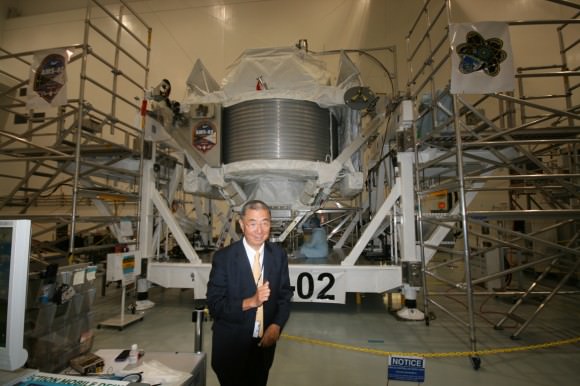
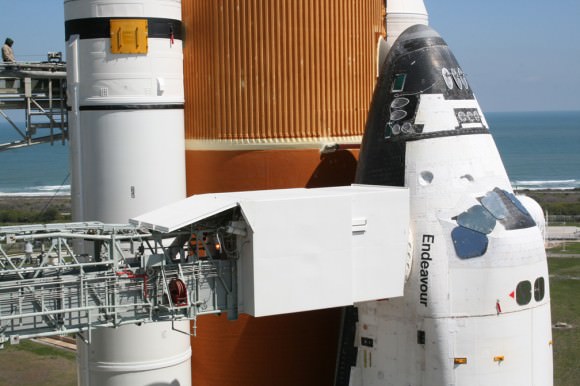
Antigravity Could Replace Dark Energy as Cause of Universe’s Expansion
[/caption]
Since the late 20th century, astronomers have been aware of data that suggest the universe is not only expanding, but expanding at an accelerating rate. According to the currently accepted model, this accelerated expansion is due to dark energy, a mysterious repulsive force that makes up about 73% of the energy density of the universe. Now, a new study reveals an alternative theory: that the expansion of the universe is actually due to the relationship between matter and antimatter. According to this study, matter and antimatter gravitationally repel each other and create a kind of “antigravity” that could do away with the need for dark energy in the universe.
Massimo Villata, a scientist from the Observatory of Turin in Italy, began the study with two major assumptions. First, he posited that both matter and antimatter have positive mass and energy density. Traditionally, the gravitational influence of a particle is determined solely by its mass. A positive mass value indicates that the particle will attract other particles gravitationally. Under Villata’s assumption, this applies to antiparticles as well. So under the influence of gravity, particles attract other particles and antiparticles attract other antiparticles. But what kind of force occurs between particles and antiparticles?
To resolve this question, Villata needed to institute the second assumption – that general relativity is CPT invariant. This means that the laws governing an ordinary matter particle in an ordinary field in spacetime can be applied equally well to scenarios in which charge (electric charge and internal quantum numbers), parity (spatial coordinates) and time are reversed, as they are for antimatter. When you reverse the equations of general relativity in charge, parity and time for either the particle or the field the particle is traveling in, the result is a change of sign in the gravity term, making it negative instead of positive and implying so-called antigravity between the two.
Villata cited the quaint example of an apple falling on Isaac Newton’s head. If an anti-apple falls on an anti-Earth, the two will attract and the anti-apple will hit anti-Newton on the head; however, an anti-apple cannot “fall” on regular old Earth, which is made of regular old matter. Instead, the anti-apple will fly away from Earth because of gravity’s change in sign. In other words, if general relativity is, in fact, CPT invariant, antigravity would cause particles and antiparticles to mutually repel. On a much larger scale, Villata claims that the universe is expanding because of this powerful repulsion between matter and antimatter.
What about the fact that matter and antimatter are known to annihilate each other? Villata resolved this paradox by placing antimatter far away from matter, in the enormous voids between galaxy clusters. These voids are believed to have stemmed from tiny negative fluctuations in the primordial density field and do seem to possess a kind of antigravity, repelling all matter away from them. Of course, the reason astronomers don’t actually observe any antimatter in the voids is still up in the air. In Villata’s words, “There is more than one possible answer, which will be investigated elsewhere.” The research appears in this month’s edition of Europhysics Letters.
Astronomy Without A Telescope – Assumptions
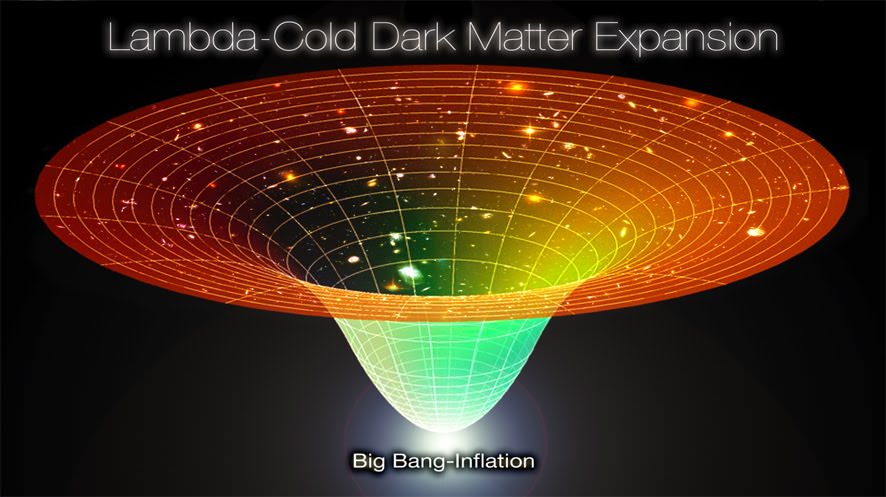
[/caption]
The current standard model of the universe, Lambda-Cold Dark Matter, assumes that the universe is expanding in accordance with the geometrical term Lambda – which represents the cosmological constant used in Einstein’s general relativity. Lambda might be assumed to represent dark energy, a mysterious force driving what we now know to be an accelerating expansion of space-time. Cold dark matter is then assumed to be the scaffolding that underlies the distribution of visible matter at a large scale across the universe.
But to make any reasonable attempt at modelling how the universe is – and how it unfolded in the past and will unfold in the future – we first have to assume that it is roughly the same everywhere.
This is sometimes called the Cosmological Principle which states that when viewed on a sufficiently large scale, the properties of the Universe are the same for all observers. This captures two concepts – that of isotropy, which means that the universe looks roughly the same anywhere you (that is you) look – and homogeneity, which means the properties of the universe look roughly the same for any observers anywhere they are and wherever they look. Homogeneity is not something we can expect to ever confirm by observation – so we must assume that the part of the universe we can directly observe is a fair and representative sample of the rest of the universe.
An assessment of isotropy is at least theoretically possible down our past light-cone. In other words, we look out into the universe and receive historical information about how it behaved in the past. We then assume that those parts of the universe we can observe have continued to behave in a consistent and predictable manner up until the present – even though we can’t confirm whether this is true until more time has passed. But anything outside our light cone is not something we can expect to ever know about and hence we can only ever assume the universe is homogenous throughout.
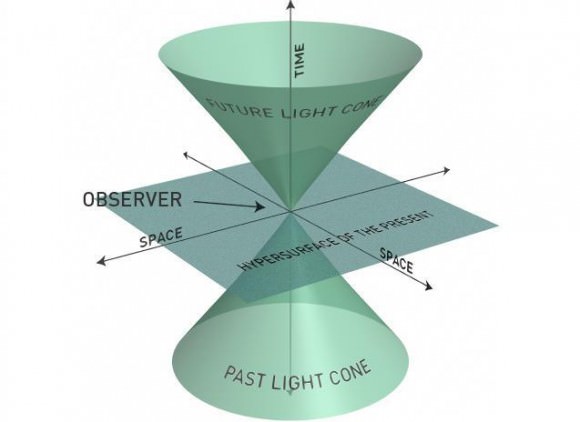
Maartens has a go a developing at developing an argument as to why it might be reasonable for us to assume that the universe is homogenous. Essentially, if the universe we can observe shows a consistent level of isotropy over time, this strongly suggests that our bit of the universe has unfolded in a manner consistent with it being a part of a homogenous universe.
The isotropy of the observable universe can be strongly implied if you look out in any direction and find:
• consistent matter distribution;
• consistent bulk velocities of galaxies and galactic clusters moving away from us via universal expansion.
• consistent measurements of angular diameter distance (where objects of the same absolute size look smaller at a greater distance – until a distance of redshift 1.5, when they start looking larger – see here); and
• consistent gravitational lensing by large scale objects like galactic clusters.
These observations support the assumption that both matter distribution and the underlying space-time geometry of the observable universe is isotropic. If this isotropy is true for all observers then the universe is consistent with the Friedmann–Lemaître–Robertson–Walker (FLRW) metric. This would mean it is homogenous, isotropic and connected – so you can travel anywhere (simply connected) – or it might have wormholes (multiply connected) so not only can you travel anywhere, but there are short cuts.
That the observable universe has always been isotropic – and is likely to continue being so into the future – is strongly supported by observations of the cosmic microwave background, which is isotropic down to a fine scale. If this same isotropy is visible to all observers – then it is likely that the universe has, is and will always be homogenous as well.
Finally, Maartens appeals to the Copernican Principle – which says that not only are we not the center of the universe, but our position is largely arbitrary. In other words, the part of the universe we can observe may well be a fair and representative sample of the wider universe.
Further reading: Maartens Is the universe homogenous?
A New Way to Visualize Warped Space and Time
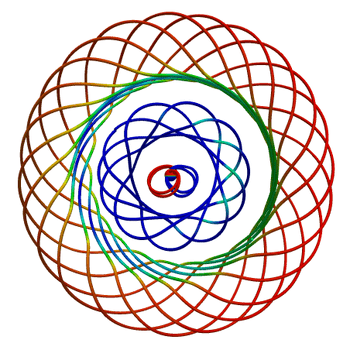
[/caption]
Trying to understand the warping of space and time is something like visualizing a scene from Alice in Wonderland where rooms can change sizes and locations. The most-used description of the warping of space-time is how a heavy object deforms a stretched elastic sheet. But in actuality, physicists say this warping is so complicated that they really haven’t been able to understand the details of what goes on. But new conceptual tools that combines theory and computer simulations are providing a better way to for scientists to visualize what takes place when gravity from an object or event changes the fabric of space.
Researchers at Caltech, Cornell University, and the National Institute for Theoretical Physics in South Africa developed conceptual tools that they call tendex lines and vortex lines which represent gravitation waves. The researchers say that tendex and vortex lines describe the gravitational forces caused by warped space-time and are analogous to the electric and magnetic field lines that describe electric and magnetic forces.
“Tendex lines describe the stretching force that warped space-time exerts on everything it encounters,” said says David Nichols, a Caltech graduate student who came up with the term ‘tendex.’. “Tendex lines sticking out of the Moon raise the tides on the Earth’s oceans, and the stretching force of these lines would rip apart an astronaut who falls into a black hole.”
Vortex lines, on the other hand, describe the twisting of space. So, if an astronaut’s body is aligned with a vortex line, it would get wrung like a wet towel.
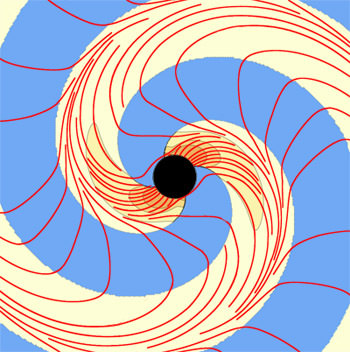
They tried out the tools specifically on computer simulated black hole collisions, and saw that such impacts would produce doughnut-shaped vortex lines that fly away from the merged black hole like smoke rings. The researchers also found that a bundle of vortex lines spiral out of the black hole like water from a rotating sprinkler. Depending on the angles and speeds of the collisions, the vortex and tendex lines — or gravitational waves — would behave differently.
“Though we’ve developed these tools for black-hole collisions, they can be applied wherever space-time is warped,” says Dr. Geoffrey Lovelace, a member of the team from Cornell. “For instance, I expect that people will apply vortex and tendex lines to cosmology, to black holes ripping stars apart, and to the singularities that live inside black holes. They’ll become standard tools throughout general relativity.”
The researchers say the tendex and vortex lines provide a powerful new way to understand the nature of the universe. “Using these tools, we can now make much better sense of the tremendous amount of data that’s produced in our computer simulations,” says Dr. Mark Scheel, a senior researcher at Caltech and leader of the team’s simulation work.
Their paper has been published in the April 11 in the Physical Review Letters.
Source: CalTech
Halos Gone MAD
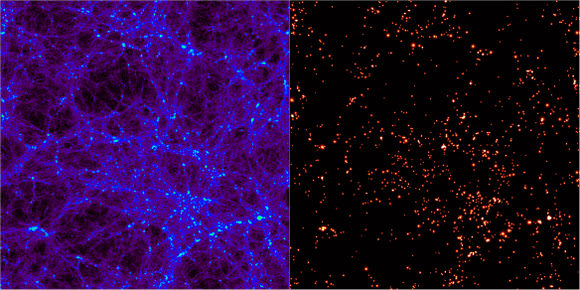
[/caption]
One of the successes of the ΛCDM model of the universe is the ability for models to create structures of with scales and distributions similar to those we view in the universe today. Or, at least that’s what astronomers tell us. While computer simulations can recreate numerical universes in a box, interpreting these mathematical approximations is a challenge in and of itself. To identify the components of the simulated space, astronomers have had to develop tools to search for structure. The results has been nearly 30 independent computer programs since 1974. Each promises to reveal the forming structure in the universe by finding regions in which dark matter halos form. To test these algorithms out, a conference was arranged in Madrid, Spain during the May of 2010 entitled “Haloes going MAD” in which 18 of these codes were put to the test to see how well they stacked up.
Numerical simulations for universes, like the famous Millennium Simulation begin with nothing more than “particles”. While these were undoubtedly small on a cosmological scale, such particles represent blobs of dark matter with millions or billions solar masses. As time is run forwards, they are allowed to interact with one another following rules that coincident with our best understanding of physics and the nature of such matter. This leads to an evolving universe from which astronomers must use the complicated codes to locate the conglomerations of dark matter inside which galaxies would form.
One of the main methods such programs use is to search for small overdensities and then grow a spherical shell around it until the density falls off to a negligible factor. Most will then prune the particles within the volume that are not gravitationally bound to make sure that the detection mechanism didn’t just seize on a brief, transient clustering that will fall apart in time. Other techniques involve searching other phase spaces for particles with similar velocities all nearby (a sign that they have become bound).
To compare how each of the algorithms fared, they were put through two tests. The first, involved a series of intentionally created dark matter halos with embedded sub-halos. Since the particle distribution was intentionally placed, the output from the programs should correctly find the center and size of the halos. The second test was a full fledged universe simulation. In this, the actual distribution wouldn’t be known, but the sheer size would allow different programs to be compared on the same data set to see how similarly they interpreted a common source.
In both tests, all the finders generally performed well. In the first test, there were some discrepancies based on how different programs defined the location of the halos. Some defined it as the peak in density, while others defined it as a center of mass. When searching for sub-halos, ones that used the phase space approach seemed to be able to more reliably detect smaller formations, yet did not always detect which particles in the clump were actually bound. For the full simulation, all algorithms agreed exceptionally well. Due to the nature of the simulation, small scales weren’t well represented so the understanding of how each detect these structures was limited.
The combination of these tests did not favor one particular algorithm or method over any other. It revealed that each generally functions well with regard to one another. The ability for so many independent codes, with independent methods means that the findings are extremely robust. The knowledge they pass on about how our understanding of the universe evolves allows astronomers to make fundamental comparisons to the observable universe in order to test the such models and theories.
The results of this test have been compiled into a paper that is slated for publication in an upcoming issue of the Monthly Notices of the Royal Astronomical Society.
Astronomy Without A Telescope – Our Inferred Universe
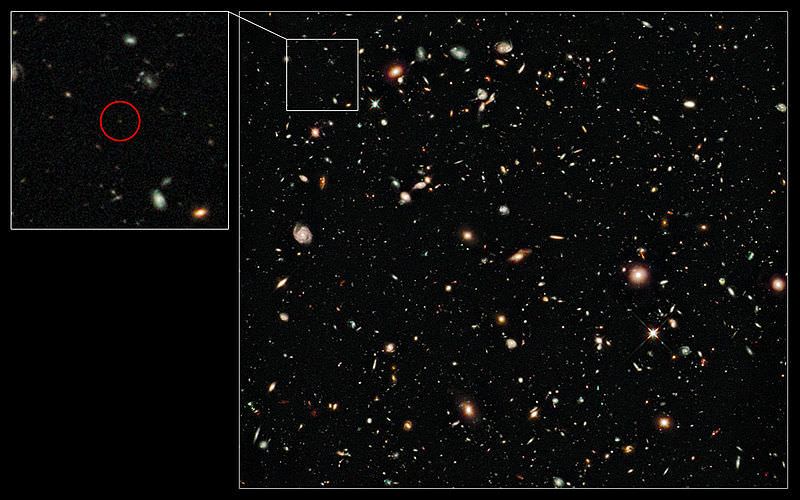
[/caption]
The universe is a big place – and getting bigger all the time – so at a large scale all unbound structures are all moving away from each other. So when we look out at distant objects, we need to remind ourselves that not only are we seeing them as they appeared in the past, when the light that hits our eyes first left them, but also that they are no longer in that location where they appear to be.
This issue reaches an extreme when we consider observations of the first luminous stars and galaxies – with the galaxy UDFy-38135539 currently holding the record as the most distant object observed and one of the youngest, existing 13.1 billion years ago – although UDFj-39546284 may be the next contender at 13.2 billion years old, subject to further spectroscopic confirmation.
UDFy-38135539 has a redshift (z) of 10 and provides no measurable light at visible wavelengths. Although light from it took 13.1 billion years ago to reach us – it is not correct to say that it is 13.1 billion light years away. In that intervening period, both it and us have moved further away from each other.
So not only is it now further away than it appears, but when the light that we see now was first emitted, it and the location that we now occupy were much closer together than 13.1 billion light years. For this reason it appears larger, but much dimmer than it would appear in a static universe – where it might genuinely be 13.1 billion light years away.
So we need to clarify UDFy-38135539’s distance as a comoving distance (calculated from its apparent distance and the assumed expansion rate of the universe). This calculation would represent the proper distance between us and it – as if a tape measure could be right now instantaneously laid down between us and it.
This distance works out to be about 30 billion light years. But we are just guessing that UDFy-38135539 is still there – more likely it has merged with other young galaxies – perhaps becoming part of a huge spiral galaxy similar to our own Milky Way, which itself contains stars that are over 13 billion years old.
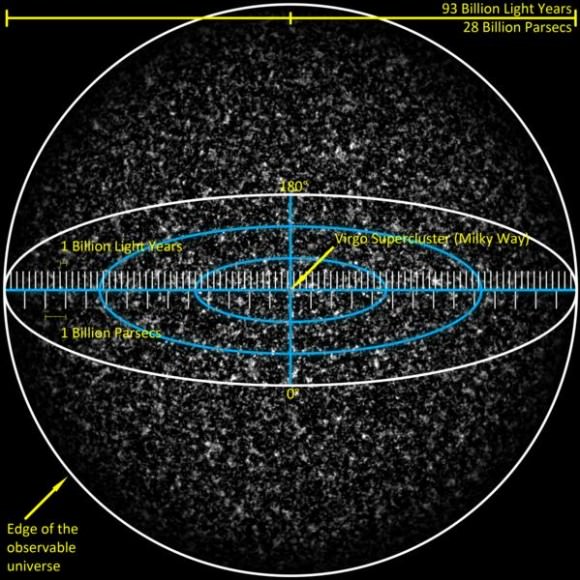
It is generally said that the comoving distance to the particles that emitted the cosmic microwave background is about 45.7 billion light years away – even though the photons those particles emitted have only been traveling for almost 13.7 billion years. Similarly, by inference, the absolute edge of the observable universe is 46.6 billion light years away.
However, you can’t conclude that this is the actual size of the universe – nor should you conclude that the cosmic microwave background has a distant origin. Your coffee cup may contain particles that originally emitted the cosmic microwave background – and the photons they emitted may be 45.7 billion light years away now – perhaps just now being collected by alien astronomers who will hence have their own 46.6 billion light year radius universe to infer – most of which they can’t directly observe either.
All universal residents have to infer the scale of the universe from the age of the photons that come to us and the other information that they carry. And this will always be historical information.
From Earth we can’t expect to ever come to know about anything that is happening right now in objects that are more distant than a comoving distance of around 16 billion light years, being the cosmic event horizon (equivalent to a redshift of around z = 1.8).
This is because those objects are right now receding from us at faster than the speed of light, even though we may continue receiving updated historical data about them for many billion of years to come – until they become so redshifted as to appear to wink out of existence.
Further reading: Davis and Lineweaver. Expanding Confusion: common misconceptions of cosmological horizons and the superluminal expansion of the universe.
Cosmology 101: The End

[/caption]
Welcome back to the third, and last, installment of Cosmology 101. So far, we’ve covered the history of the universe up to the present moment. But what happens next? How will our universe end? And how can we be so sure that this is how the story unfolded?
Robert Frost once wrote, “Some say the world will end in fire; some say in ice.” Likewise, some scientists have postulated that the universe could die either a dramatic, cataclysmic death – either a “Big Rip” or a “Big Crunch” – or a slower, more gradual “Big Freeze.” The ultimate fate of our cosmos has a lot to do with its shape. If the universe were open, like a saddle, and the energy density of dark energy increased without bound, the expansion rate of the cosmos would eventually become so great that even atoms would be torn apart – a Big Rip. Conversely, if the universe were closed, like a sphere, and gravity’s strength trumped the influence of dark energy, the outward expansion of the cosmos would eventually come to a halt and reverse, collapsing on itself in a Big Crunch.
Despite the poetic beauty of fire, however, current observations favor an icy end to our universe – a Big Freeze. Scientists believe that we live in a spatially flat universe whose expansion is accelerating due to the presence of dark energy; however, the total energy density of the cosmos is most likely less than or equal to the so-called “critical density,” so there will be no Big Rip. Instead, the contents of the universe will eventually drift prohibitively far away from each other and heat and energy exchange will cease. The cosmos will have reached a state of maximum entropy, and no life will be able to survive. Depressing and a bit anti-climactic? Perhaps. But it probably won’t be perceptible until the universe is at least twice its current age.
At this point you might be screaming, “How do we know all this? Isn’t it all just rampant speculation?” Well, first of all, we know without a doubt that the universe is expanding. Astronomical observations consistently demonstrate that light from distant stars is always redshifted relative to us; that is, its wavelength has been stretched due to the expansion of the cosmos. This leads to two possibilities when you wind back the clock: either the expanding universe has always existed and is infinite in age, or it began expanding from a smaller version of itself at a specific time in the past and thus has a fixed age. For a long time, proponents of the Steady State Theory endorsed the former explanation. It wasn’t until Arno Penzias and Robert Wilson discovered the cosmic microwave background in 1965 that the big bang theory became the most accepted explanation for the origin of the universe.
Why? Something as large as our cosmos takes quite a while to cool completely. If the universe did, in fact, began with the kind of blistering energies that the big bang theory predicts, astronomers should still see some leftover heat today. And they do: a uniform 3K glow evenly dispersed at every point in the sky. Not only that – but WMAP and other satellites have observed tiny inhomogeneities in the CMB that precisely match the initial spectrum of quantum fluctuations predicted by the big bang theory.
What else? Take a look at the relative abundances of light elements in the universe. Remember that during the first few minutes of the cosmos’ young life, the ambient temperature was high enough for nuclear fusion to occur. The laws of thermodynamics and the relative density of baryons (i.e. protons and neutrons) together determine exactly how much deuterium (heavy hydrogen), helium and lithium could be formed at this time. As it turns out, there is far more helium (25%!) in our current universe than could be created by nucleosynthesis in the center of stars. Meanwhile, a hot early universe – like the one postulated by the big bang theory – gives rise to the exact proportions of light elements that scientists observe in the universe today.
But wait, there’s more. The distribution of large-scale structure in the universe can be mapped extremely well based solely on observed anisotropies in the CMB. Moreover, today’s large-scale structure looks very different from that at high redshift, implying a dynamic and evolving universe. Additionally, the age of the oldest stars appears to be consistent with the age of the cosmos given by the big bang theory. Like any theory, it has its weaknesses – for instance, the horizon problem or the flatness problem or the problems of dark energy and dark matter; but overall, astronomical observations match the predictions of the big bang theory far more closely than any rival idea. Until that changes, it seems as though the big bang theory is here to stay.
Astronomy Without A Telescope – Dark Statistics
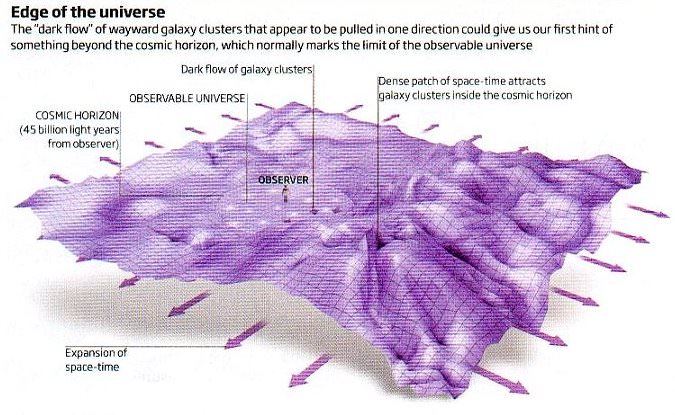
[/caption]
The hypothetical dark flow seen in the movement of galaxy clusters requires that we can reliably identify a clear statistical correlation in the motion of distant objects which are, in any case, flowing outwards with the expansion of the universe and may also have their own individual (or peculiar) motion arising from gravitational interactions.
For example, although galaxies have a general tendency to rush away from each other as space-time expands between them, the Milky Way and the Andromeda Galaxy are currently on a gravitationally bound collision course.
So, if you are interested in the motion of the universe at a large scale, it’s best to study bulk flow – where you step back from consideration of individual objects and instead look for general tendencies in the motion of large numbers of objects.
Very large scale observations of the motion of galaxy clusters were proposed by Kashlinsky et al in 2008 to indicate a region of aberrant flow, inconsistent with the general tendency in the motion and velocity expected by the expansion of the universe – and which cannot be accounted for by localized gravitational interactions.
On the basis of such findings, Kashlinsky has proposed that inhomogeneities in the early universe may have existed prior to cosmic inflation – which would represent a violation of the currently favored standard model for the evolution of the universe, known as the Lambda Cold Dark Matter (Lambda CDM) model.
The aberrant bulk flow might result from the existence of a large concentration of mass beyond the edge of the observable universe – or heck, maybe it is another adjacent universe. Since the cause is unknown – and perhaps unknowable, if the cause is beyond our observable horizon – the astronomical interrobang ‘dark’ is invoked – giving us the term ‘dark flow’.
To be fair, a lot of the more ‘out there’ suggestions to account for these data are made by commentators of Kashlinsky, rather than Kashlinsky and fellow researchers themselves – and that includes use of the term dark flow. Nonetheless, if the Kashlinsky data isn’t rock solid, all this wild speculation becomes a little redundant – and Occam’s razor suggests we should continue assuming that the universe is best explained by the current standard Lambda CDM model.
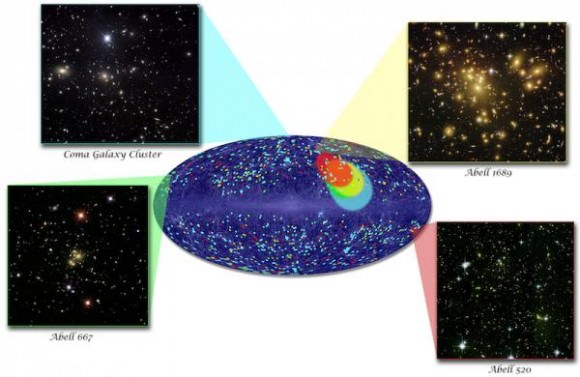
The Kashlinsky interpretation does have its critics. For example, Dai et al have provided a recent assessment of bulk flow based on the individual (peculiar) velocities of type 1A supernovae.
The Kashlinsky analysis is based on observations of the Sunyaev–Zel’dovich effect – which involves faint distortions in the cosmic microwave background (CMB) resulting from CMB photons interacting with energetic electrons – and these observations are only considered useful for identifying and observing the behavior of very large scale structures such as galaxy clusters. Dai et al instead use specific data points – being standard candle Type 1a supernovae observations – and look at the statistical fit of these data to the expected bulk flow of the universe.
So, while Kashlinsky et al say we should ignore the motion of individual units and just look at the bulk flow – Dai et al counter with saying we should look at the motion of individual units and determine how well those data fit an assumed bulk flow.
It turns out that Dai et al find the supernovae data can fit the general trend of bulk flow proposed by Kashlinsky – but only in closer (low red shift) regions. More significantly, they are unable to replicate any aberrant velocities. Kashlinsky measured an aberrant bulk flow of more than 600 kilometers a second, while Dai et al found velocities derived from Type 1a supernovae observations to best fit a bulk flow of only 188 kilometers a second. This is a close fit with the bulk flow expected from the Lambda CDM model of the expanding universe, which is around 170 kilometers a second.
Either way, it’s all down to a statistical analysis of general tendencies. More data would help here.
Further reading: Dai et al. Measuring the cosmological bulk flow using the peculiar velocities of supernovae.
Perseus Cluster Thicker Around the Middle Than Thought
[/caption]
The Japanese Suzaku X-ray telescope has just taken a close look at the Perseus galaxy cluster, and revealed it’s got a bit of a spare tire.
Suzaku explored faint X-ray emission of hot gas across two swaths of the Perseus Galaxy Cluster. The resulting images, which record X-rays with energies between 700 and 7,000 electron volts in a combined exposure of three days, are shown in the two false-color strips above. Bluer colors indicate less intense X-ray emission. The dashed circle is 11.6 million light-years across and marks the so-called virial radius, where cold gas is now entering the cluster. Red circles indicate X-ray sources not associated with the cluster.
The results appear in today’s issue of Science.
The Perseus cluster (03hh 18m +41° 30‘) is the brightest extragalactic source of extended X-rays.
Lead author Aurora Simionescu, an astrophysicist at Stanford, and her colleagues note that until now, most observations of galaxy clusters have focused on their bright interiors. The Suzaku telescope was able to peer more closely at the outskirts of the Perseus cluster. The resulting census of baryonic matter (protons and neutrons of gas and metals) compared to dark matter offers some surprising observations.
It turns out the fraction of baryonic matter to dark matter at Perseus’s center was consistent with measurements for the universe as a whole, but the baryonic fraction unexpectedly exceeds the universal average on the cluster’s outskirts.
“The apparent baryon fraction exceeds the cosmic mean at larger radii, suggesting a clumpy distribution of the gas, which is important for understanding the ongoing growth of clusters from the surrounding cosmic web,” the authors write in the new paper.
Source: Science. See also JAXA’s Suzaku site

